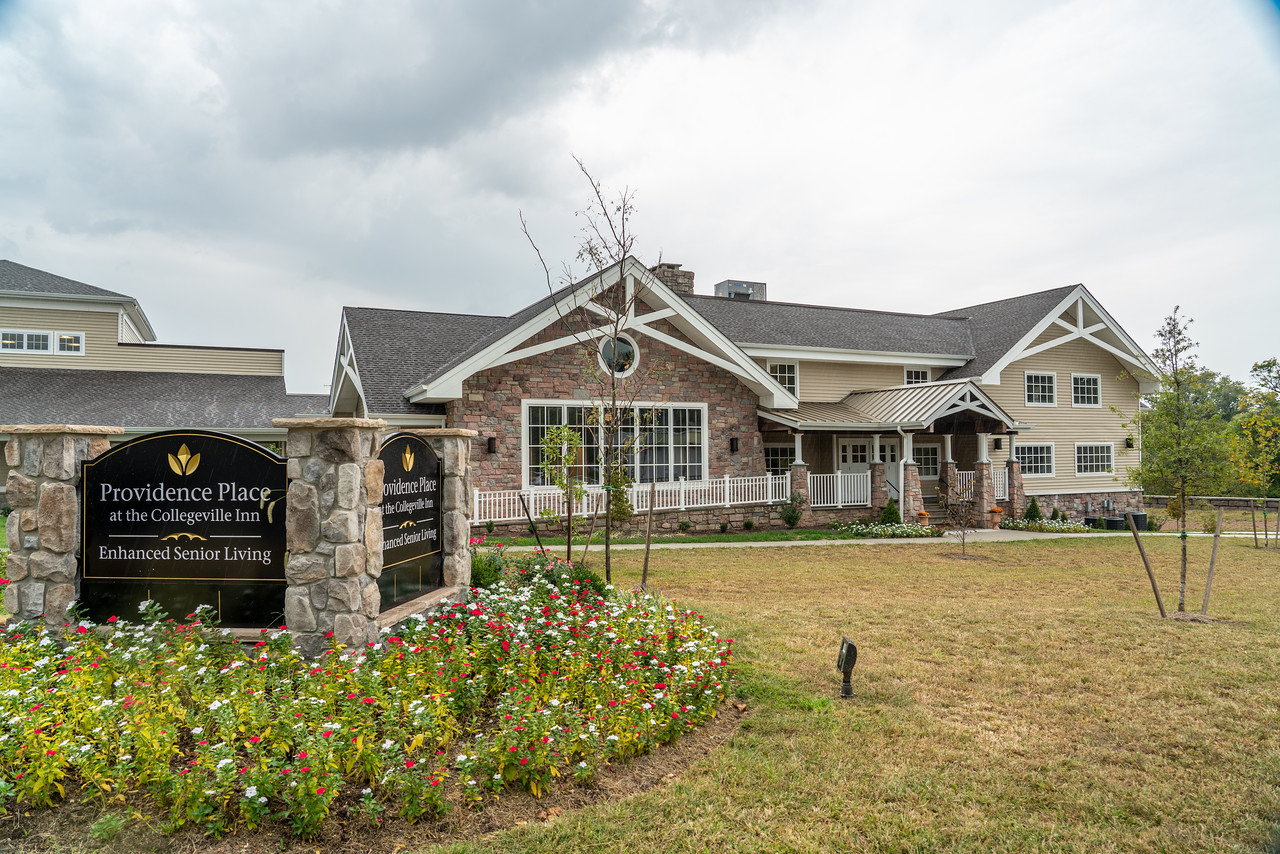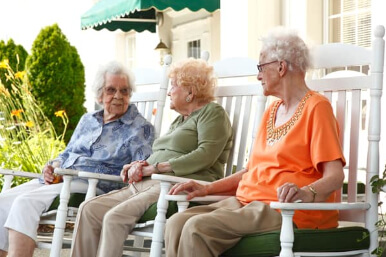“I truly enjoy being here. It makes me happy!”

Types of Senior Living
The Different Types of Senior Living Facilities Explained
Making the decision to move yourself or a loved one into a senior care facility is difficult and often confusing. There are many different options, and each of them provides varying levels of care and support.
In this guide, we cover the various types of senior living and what they mean.
- Independent Living
- Assisted Living
- Personal Care
- Nursing Homes or Skilled Nursing
- Continuing Care Retirement Communities
- Active Adult Communities
Independent Living
As the name suggests, independent living is for seniors who can take care of themselves but want to be free of the stress that comes with home ownership. Independent living communities rent out apartments or houses, and the monthly rent includes repairs and home maintenance. Many communities also provide housekeeping and laundry services, plus daily meals.
Independent living facilities offer various amenities for residents. These may include a fitness center, game room, activity lounge, beauty or barber shop, and more. Some communities also organize group activities and outings.
Assisted Living
Assisted living communities offer the amenities and conveniences of Independent living, along with help to complete daily activities, such as:
- Bathing
- Dressing
- Going to the bathroom
- Cooking meals
- Transporting
Unlike a nursing home, assisted living doesn’t provide advanced or skilled medical care. However, assisted living facilities may offer some medical services, like medication management, access to on-staff nurses, and onsite occupational, physical, or speech therapy. Residents usually have their own apartments and a degree of privacy, yet still receive help when it’s needed.
Assisted living communities are a good fit for seniors who do not require advanced medical attention but have trouble taking care of themselves and performing basic tasks known as activities of daily living (ADLs). Although family members often try to provide care, they may find that they cannot always be there for an aging loved one or provide an adequate level of support. This is where an assisted living facility can help.
Personal Care
Personal care facilities help residents take care of daily needs, like meals, housekeeping, laundry, personal hygiene, and taking medications. They usually offer activities for their residents and provide transportation to medical appointments, shopping, and other places.
Personal care facilities are often confused with assisted living because, in some states, the two are licensed the same way. In other states, such as Pennsylvania, they are licensed separately. While both provide help with basic tasks, assisted living offers some medical services in addition to daily care assistance.
Nursing Homes
Nursing homes are what most people think of when they start searching for senior care. However, not all older adults require the medical attention provided in this setting.
Nursing homes, or skilled nursing facilities, provide medical care from doctors, nurses, physical and occupational therapists, and other professionals. Residents also receive assistance with bathing, dressing, feeding, and other daily living activities. Skilled nursing facilities are often depicted as a long-term solution, but they can also serve as a short-term solution following an injury, surgery, or illness.
Seniors may require care in a nursing home due to:
- Illness
- Physical challenges, such as incontinence, hearing/vision loss, and limited mobility
- Mental difficulties, like dementia or Alzheimer’s
- Rehabilitation after surgery or a hospital stay
If a senior has a lot of medical needs, skilled nursing care is often required.
Continuing Care Retirement Communities
A continuing care retirement community (CCRC) is a unique living situation. Seniors must enter these communities when they are still relatively healthy and independent, but they sign a contract that guarantees their needs will be taken care of as they age.
The contract typically involves an entrance fee that can range from tens of thousands to hundreds of thousands of dollars, and even in the millions at some communities. This entrance fee is usually paid through a monthly plan. In addition to their entrance fee payments, residents of continuing care communities will usually have maintenance fees for the upkeep of their home, cottage, or apartment.
Once you are in a CCRC, you can enjoy the amenities it has to offer and receive more advanced care as needed. The idea is that your entrance fee covers the cost of services, so you typically pay little or no extra money for receiving care.
The appeal of a CCRC is that it allows seniors to stay in the same community as they age rather than having to search for a new senior living option once their needs change. Residents will simply move within the campus to various facilities as levels of care change. However, the large entrance fees present a financial barrier to many seniors and their families.
Active Adult Communities
People often confuse independent living with active adult communities (also called 55+ communities). The two are actually quite different.
An active adult community is very similar to any other residential neighborhood, except there is usually a minimum age requirement for residents. You may either rent or buy your home, depending on the pricing model of the community. Many also have home owners’ association (HOA) dues or other monthly fees. Active adult communities tend to cover exterior maintenance in their monthly fees so that residents don’t have to worry about upkeep.
Unlike independent living, 55+ communities don’t offer meals, housekeeping, or laundry services. However, they usually have amenities, such as a swimming pool, fitness center, golf course, and more. These communities are for active, healthy adults who want to be free of exterior home maintenance during their retirement years.
How to Choose the Right Facility
Choosing the right senior living facility depends on the needs of yourself or your loved one. If you are able to care for yourself but want to live in a community, an independent living facility is probably the best fit. For those who need help with daily tasks, personal care and assisted living can help. Skilled nursing care is designed for seniors who have severe, long-term medical needs.
When comparing different types of facilities, ask the staff about what happens when your needs change. Is a higher level of care available? Will they provide referrals or help you find an in-home care provider to visit you at the facility? Consider future needs when evaluating your options.
At Providence Place Senior Living, we offer a range of services:
- Independent Living
- Assisted Living
- Memory Care (early and late stage for persons living with dementia or Alzheimer’s)
Our communities provide a homelike setting where seniors can “age in place.” This means that you can receive additional services as health needs change over time in your same apartment without moving again in most cases.
To learn more, request information or schedule a tour at any of our seven campuses across Pennsylvania.
References:
https://www.helpguide.org/articles/senior-housing/a-guide-to-nursing-homes.htm
https://www.helpguide.org/articles/senior-housing/assisted-living-facilities.htm
https://www.aarp.org/caregiving/basics/info-2017/continuing-care-retirement-communities.html
https://www.aplaceformom.com/planning-and-advice/articles/continuing-care-retirement-communities
https://www.helpguide.org/articles/senior-housing/independent-living-for-seniors.htm
https://www.comfortlife.ca/retirement-community-resources/active-adult-vs-independent-living
https://www.comfortlife.ca/retirement-community-resources/active-adult-vs-independent-living
